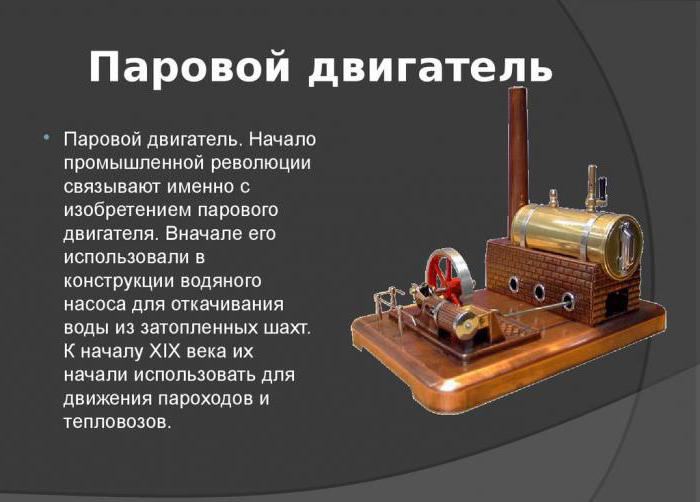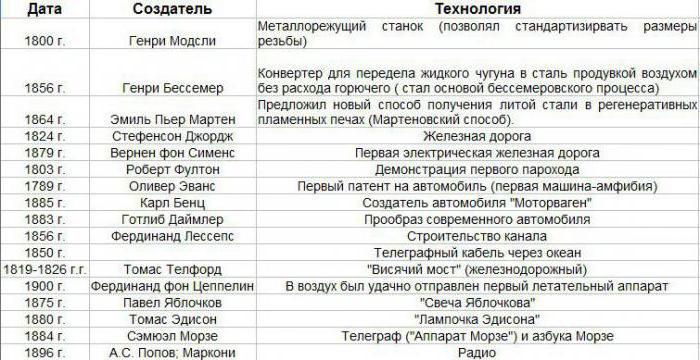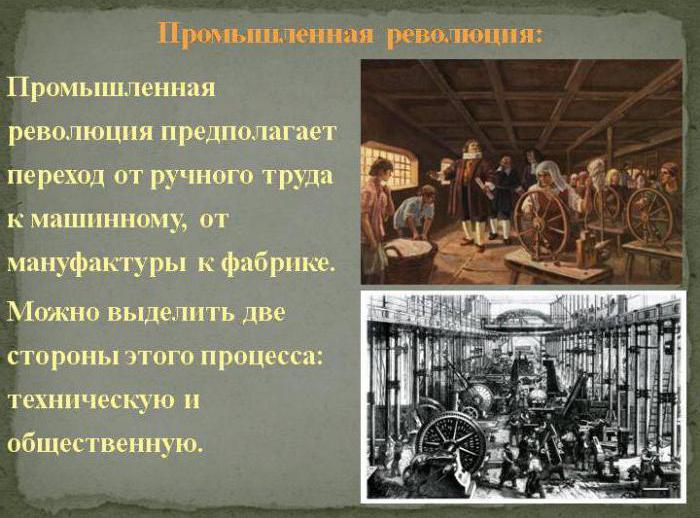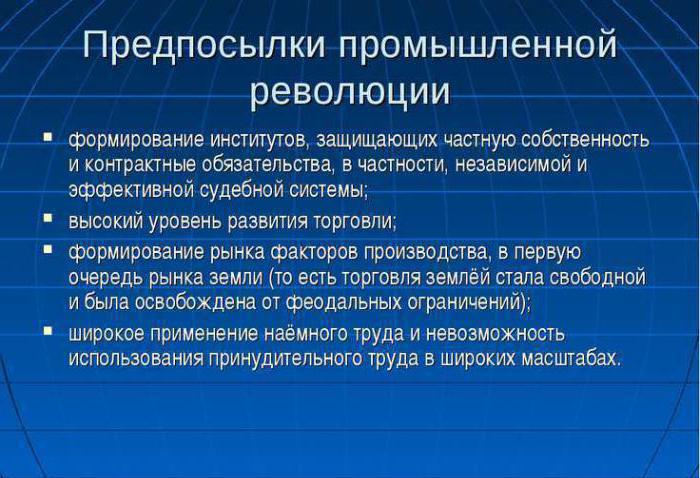Table of scientific achievements of 18th-19th centuries scientists. Lesson summary and presentation “Great discoveries and achievements of the 19th century”
History lesson notes in 8th grade.
Teachers: Denisenko G.V., history teacher, Ryzhkova T.G., physics teacher.
Subject : Great discoveries and achievements XIX century.
The purpose of the lesson: summarize students' knowledge about most important discoveries and achievementsXIXcentury.
Lesson Objectives :
Integrate students' understanding of the connections between the modernization of society and changes in its spiritual life.
Study the general trends in the development of science, art, and the influence of technological progress on the lives and consciousness of people.
Development of students' cognitive activity through interdisciplinary connections.
Lesson form : integrated (history - physics)
Equipment: internal combustion engine piston model; ebonite stick and paper; music center and music fragments of Claude Debussy “Moonlight on a Terrace”, Edvard Grieg “Evening in the Mountains”, Richard Wagner “Wolfram’s Romance from the opera “Tannhäuser”, Ludwig van Beethoven “Fur Elise”; multimedia presentation"Great discoveries and achievementsXIXcentury"; handouts on this lesson topic.
Plan:
Teacher's opening speech.
Lesson goal setting .
Practical task.
Analysis of systematization carried out by students and media - presentation.
Practical demonstration.
Practical demonstration.
Spiritual heritage XIX century.
Lesson summary.
Homework.
On the desk written epigraph :
“AND EVERYTHING YOU DREAMED ABOUT HAS ALREADY COME TRUE,
AND WHAT WAS NOT SUCCESSFUL, WAS SUCCESSFUL.”
Leonid Martynov.
Teacher's opening speech :
The 19th century represents a very special period in world history. It was he who brought the West and the East together. It was in this century, still imperfect, from our point of view, that machines blew up the measured life of people. Great inventions XIX centuries turned Europe into a small space, saturated with railways, equipped with telegraph and fast postal service. Past centuries, full of heroism, refined manners and religious ecstasy, are gone forever, making way for taxes and budgets, tariffs and excises, exchanges and auctions. Technology has become religion. In this century, capitalism has grown to monopolies. Then it became clear that from time to time the economy is shaken by crises of overproduction. If in former times the life of a grandson was not much different from the life of his grandfather, then in the 19th century an avalanche of inventions and discoveries fell on humanity so rapidly that grandchildren and grandfathers often no longer understood each other. The face of the Earth was changing. Traditions were crumbling. The way of life and human relationships were restructured.XIXcentury became the century of the establishment and flourishing of industrial civilization.
Lesson goal setting .
Today in class we will generalize and deepen our knowledge about great discoveries and achievementsXIXcentury. Today in class we will practical work, during which you guys will demonstrate your knowledge of the physics topics you have studied: mechanics and electrostatics.
3. Practical task.
First practical task we called "Erudite " In front of you on the board are areas of inventions and discoveriesXIXcentury. And in the “basket” there is a scattering of inventions and discoveriesXIXcentury. Your task is to distribute them into areas of science and technology. (Annex 1 )
New energy sources
Means of communication
Transport
Mechanical engineering
Biology and medicine
Music
“Oh, fashion, fashion!”
Photo - the new kind art
Discoveries in the exact sciences
Analysis of systematization carried out by students and media - presentation
Let's check how well you guys completed the task. And with the help of an educational presentation, we will deepen our knowledge in some issues of inventions and discoveries made inXIXcentury. (Appendix 2. Multimedia presentation )
Practical demonstration .
Here is a model of an internal combustion engine. It was the Frenchman Beau de Rocher who proposed the 4-stroke cycle scheme. Based on your knowledge of physics, explain the principle of operation of an internal combustion engine. (A physics teacher evaluates the correctness of the answer. )
Practical demonstration.
- In every historical era, people believed that they were living in a special time. Historical time is unique and unrepeatable. And yet, the 19th century is truly unusual! Look how many discoveries and inventions he left for the Future! Researchers call this time the “Generation of Geniuses.” One of these brilliant inventions is the discovery of electricity.
Spiritual heritage XIX century.
UndoubtedlyXIXcentury was the creator. How many talented people he gave to history! The world froze in admiration not only from the genius of the man’s inventive thought, but from the fact that amazing music was sounding nearby. Great composers conquered the industrial age. How many masterpieces of that era have become world classics!
( Appendix 2. Multimedia presentation )
What music there was, what music it sounded like!
She didn’t lecture at all, but only quietly called.
Cure suffering with suffering, and warm the soul with goodness .
Listen to these sounds of music. Sounds that shockedXIXcentury, music that has become eternity.
music fragments
Lesson summary.
What do you guys think, what did you take from the lesson that was useful for you?
Looking far ahead, the best minds of the 19th century believed that the future belonged to a spiritually rich person. For a person who can make his life wonderful. For a person who has an insatiable need for knowledge, kindness, and beauty. And I would like to end the lesson with the words with which we began the lesson:
“AND EVERYTHING YOU DREAMED ABOUT HAS ALREADY COME TRUE. AND WHAT WAS NOT SUCCESSFUL, WAS SUCCESSFUL.”
Homework.
Ashomework You can ask students the question: “WHAT FROM THE 19TH CENTURY SHOULD HUMANITY TAKE WITH THEM INTO THE 3RD MILLENNIUM?” or task: publishing a newspaper "XIXcentury to future centuries".
APPLICATION.
Discoveries and inventions of the 19th century.
1800
Italian Alesandro Volta invents a direct current source.
The Frenchman Nicolas Appert created the first canned food.
James Maxwell and Heinrich Hertz developed the theory of radio waves.
William Herschel discovered infrared rays.
1804 Englishman Richard Trevithick created the first steam locomotive.
1808 Jordarki Cuparanto jumped out of the burning balloon and survived. The parachute saved his life.
1816 1st stethoscope.
1821 1st electric motor by Michael Farraday.
1822 Frenchman J. -N. Niépce receives a photographic image for the first time.
1823
Charles Babbage invented the adding machine.
Englishman Mackintosh invented a waterproof raincoat
1825 1st passenger railway in England (Stockholm-Darlington route).
1827 Englishman John Walker invented self-lighting matches.
1829 Braille created a raised font for the blind.
1831 M. Farraday created the 1st dynamo.
1834 Invention of the thresher.
1837
The Englishmen Croke and Whitson invented the electromagnetic telegraph.
Isaac Pitman developed the basics of shorthand.
1842 American Crawford Long used ether for pain relief.
1845 1st washing powder.
1846 1st anesthesia in surgery.
1851
An ophthalmoscope was created to test vision.
Sewing machine Singer.
1854 1st safety elevator with automatic brake by Elisha Otis.
1856
Louis Pasteur discovers microbes.
The Bessemer process is the mass production of steel.
Safety matches were invented by John Lundstrom.
1859
Englishman Charles Darwin unveils his theory of evolution.
The first oil well was drilled by Edwin Drake in Pennsylvania.
1860 1st reinforced concrete.
1861 1st color photograph.
1863
A pasteurization process is used to kill germs.
1st underground railway in England.
1864 The Red Cross Society was founded in Geneva to help wounded soldiers.
1866 The work of the Bohemian botanist Mendel on the mechanism of heredity.
1867 1st typewriter by Christopher Scopes, Carl Glidden and Sue Soulier.
1869 The Suez Canal is opened.
1870
American Thomas Edison invented the light bulb.
The first synthetic material was obtained - celluloid.
1873 Invention of the binder and reaper.
1876 Alexander Bell's first telephone.
1877
American Thomas Edison invents the gramophone.
He also records the first gramophone record.
1879
1st power plant in San Francisco.
1st electric train (Berlin).
1880 1st electric lighting (USA).
1880 1st electric elevators (USA).
1883 The first skyscraper in Chicago was built by William Jenki - 10 floors.
1885
The Germans G. Daimler and Benz create the first car.
Louis Pasteur received his first vaccination
1887
Contact lenses are invented.
Eiffel Tower in Paris.
1888
Heinrich Hertz discovers radio waves
The Eastman-Kodak company released the first portable camera.
Scottish surgeon John Dunklop invented a pneumatic tire for cars.
1890
1st escalator by Americans George Wheeler and Jess Reno.
1st movie camera - Thomas Edison's kinetophone.
1891 American Jutson Whitecomb designed a new type of fastening of clothes - the “zipper”.
1895
Russian and Italian inventors Popov and Marconi invented radio.
The Lumière brothers opened the first cinema in Paris with a Cinematograph screen. X-rays discovered invisible rays.
1896 1st modern Olympic Games.
1897
For the first time they began to consume frozen meat.
1st surgery to treat a beating heart.
1898
1st proof that mosquitoes carry malaria.
French scientists Pierre and Marie Curie study radioactivity and discover radium.
Zeppelin airship.
1899
1st aspirin for pain relief.
Page 1 of 5
Industrial Revolution
The 19th century, as we know, went down in history as the century of scientific and technological progress, the century of the industrial revolution. Scientific discoveries and practical applications based on them technical advances allowed humanity to reach an unprecedentedly high, fundamentally new level of development compared to all previous periods of history, including the 18th century.
However, technological progress is inextricably linked with changes in all areas of public life - social, economic, political and cultural.
Technical innovations and scientific discoveries formed a different mentality, a different attitude towards the role and place of man in the world. The rapid development of factories and other large enterprises using modern technology, ruined the owners of factories and small artisans, and increased the number of hired workers. The mechanization of industrial production and the emergence of new professions required improved qualifications of workers, an increase in the number engineering personnel. The downside of mechanization was the increase in unemployment, since one machine could replace up to 20 people or more, and the work of unskilled workers was paid extremely low, especially for female and child labor.
The ratio of rural and urban populations has changed. The growth of urban industrial centers stimulated an influx of impoverished rural residents into the cities, who sought to find some kind of work in the city. They became completely dependent on the employer, agreeing to any payment. Such conditions caused dissatisfaction among workers, and contradictions between workers and factory management intensified. Initially, workers' actions were spontaneous, for example, the Luddite movement in England. Gradually, the workers' actions acquired a more conscious character, their demands became thoughtful and clearly formulated. The proletariat class was formed, workers' parties were formed, the programs of which reflected the ideology of the new class. At the same time, trade unions were created to defend the interests of workers in one or more related industries. The economic consequences of the industrial revolution consisted of increasing the efficiency of resource use, improving product quality, reducing the cost of manufactured goods, expanding markets, and the emergence of fundamentally new types of goods and services.
The mutual influence of the industrial revolution and politics is obvious. The emergence of new types of weapons, the use of more advanced and powerful engines, the military fleet, railways, which greatly reduce travel time and the cost of transportation, new methods of communication - telegraph and telephone and other technical and scientific achievements allowed leading developed countries to significantly strengthen their military power and defense capability, pursue an active foreign policy, and dictate terms in the international arena.
Progress in printing has created real opportunity the emergence of the regular press - newspapers and magazines, on the pages of which, in heated debate, the political struggle taking place in society was reflected, the programs and creeds of various party groups were formulated. Improved printing presses and fast delivery by rail ensured huge circulations and timely (the next day, and sometimes the same day) notification of readers with the latest news. With the help of the press, public opinion was formed.
The influence of technological progress on culture is also very significant. Scientific discoveries in the fields of mathematics, mechanics, physics, chemistry, biology, physiology, medicine, etc. refuted what was dominant in the 18th century. the conviction that the whole world has already been known, the basic laws of the universe have already been discovered, and all that remains is to learn how to use them, improving nature and ourselves. New achievements have pushed back the horizons of knowledge, introducing into human ideas, on the one hand, the idea of the impossibility of finite knowledge, and on the other, the awareness of limitless possibilities. human brain. Use in daily life technical innovations, getting used to them and to the advantages they created - be it travel by rail, electric lighting or telephone communications- formed new character traits of a person. The ability to handle complex and not understandable machines and instruments, recognition of the advantages of new things, acquisition or possession of them meant “involvement in progress”, increased a person’s self-esteem and his social significance in the eyes of others. This made him more decisive and self-confident. The presence of telegraph and telephone messages developed the habit of quickly making decisions, clearly and more firmly formulating one’s opinion.
The seventy years from 1760 to 1830, and especially the thirty years from 1770 to 1800, were a period of decisive turning point in world history. They mark the first practical implementation of the new capabilities of machines within the framework of the new, capitalist productive industry. As soon as one took this path, the enormous scope of industrial progress and science XIX century has become inevitable. New system was so much more effective and so much cheaper than the old one that any serious competition with it was no longer possible. There could also be no turning back. Sooner or later, the entire way of life had to change, the lives of every person all over the world. This critical transition was the culmination of those changes in technology and economics which, as has been shown, reached their climax in England, in the field of technology, about 1760, and in France, in the field of economics and politics, thirty years later. Making these changes was not easy; and it is no coincidence that this period was an era of revolutions and wars unprecedented in history.
In science, the transformations of the 18th century were also revolutionary in nature, and the expression “revolution in pneumatics” refers to only one aspect of these transformations. Although in traditional works on the history of science they are interpreted only as an appendage to the refusal of Copernicus - Galileo - Newton from ancient science, this is a criterion only to what extent the historians themselves are still under the hypnosis of the classical tradition. The 17th century solved the problems posed by ancient Greek science with the help of new mathematical and experimental methods. Scientists of the 18th century had to solve problems with these methods that the ancient Greeks had never even thought about. But they had to do Furthermore: they had to firmly introduce science into the production mechanism as its inseparable component. The use of power plants, chemistry and electricity was henceforth to make science absolutely necessary for industry. The first step towards this was taken in the 17th century, when advances in the field of astronomy put science at the service of navigation. And yet it remained largely what it had become in classical times - a hidden part of a belief system erected in the interests of the ruling classes. In other words, it was part of the ideological superstructure. In fact, science has given industry nothing. At the dawn of the 19th century, it was supposed to, without losing its academic character, become one of the main elements of the productive forces of mankind.
In the field of ideas, the age of revolutions produced very little that could be compared with scientific discoveries or technical inventions this period. It took time to digest the events and transformations that quickly followed one another during the period from 1760 to 1830. In the field of thinking, this era is on the verge of two periods. The ideas that inspired the revolution were the ideas of the French philosophers - Voltaire and Rousseau. They were the legacy of Newton and Locke, based on an emotional faith in man and in the possibility of his improvement through free institutions and enlightenment, once the ties that bound him to church and crown were broken.
The ideas that were to emerge in the 19th century were based on the hard experiences of the Industrial Revolution and the refusal of people to apply the slogans of freedom, equality and fraternity too literally. An attempt to apply the social philosophy of the Enlightenment to the French Revolution revealed its serious shortcomings. In particular, it showed how little the new ideas concerned the lives of the peasants and poor workers who made up the bulk of the population. It was they - the people - who gave the revolution its strength, but when its immediate goal - the elimination of the restrictions imposed by feudalism on private enterprise - was achieved, the same people became a threat constantly hanging over the owners of property, the pillars of society. Science, enlightenment, liberal theology, once in vogue, are now considered dangerous thoughts. This immediate transition can be clearly seen by comparing the optimism of Godwin (1756 - 1836) with the harsh and hopeless picture of human existence drawn by Malthus (1766 - 1834).
Significant progress in ideas was a direct consequence of the great transformations of this time. It was a recognition of the presence of a historical and immutable element in human affairs. In accordance with the official - Newtonian - liberal point of view, it was believed that natural laws that were transferred from solar system on human life and on human society, are established for eternity. It was only necessary to discover what these laws were, and once for all to bring industry, Agriculture and society in accordance with them. The failure of the French Revolution's attempt to establish the Age of Reason provided an opportunity for the development of an opposing view, the idea of evolutionary development. Such an idea regarding human societies actually appeared in the early 18th century in Vico (1688 - 1744), and later Buffon (1707 - 1788) and Erasmus Darwin (1731 - 1802) suggested that organisms and even the Earth itself had a long evolutionary history. However, it fell to Hegel (1770 - 1831) to generalize these ideas into a philosophical system, and it was up to Charles Darwin (1809 - 1882) and Karl Marx (1818 - 1883) to show the consequences of the evolutionary struggle in nature and society later, in the 19th century.
Scientific and technological achievements of the 19th century
The 19th century laid the foundations for the development of 20th century science and created the preconditions for many of the future inventions and technological innovations that we enjoy today. Scientific discoveries of the 19th century were made in many areas and had a great influence on further development
Scientific discoveries of the 19th century: Physics and electrical engineering
Key Feature in the development of science of this period of time is the widespread use of electricity in all branches of production. And people could no longer refuse to use electricity, having felt its significant benefits. A lot of scientific discoveries The 19th century was accomplished in this area of physics. At that time, scientists began to closely study electromagnetic waves and their effect on various materials. The introduction of electricity into medicine began.
In the 19th century, such famous scientists as the Frenchman Andre-Marie Ampère, two Englishmen Michael Faraday and James Clark Maxwell, and the Americans Joseph Henry and Thomas Edison worked in the field of electrical engineering.
In 1831, Michael Faraday noticed that if a copper wire moves in a magnetic field, crossing lines of force, then a electricity. This is how the concept of electromagnetic induction appeared. This discovery paved the way for the invention of electric motors.
In 1865, James Clark Maxwell developed the electromagnetic theory of light. He suggested the existence of electromagnetic waves, through which electrical energy is transmitted in space. In 1883, Heinrich Hertz proved the existence of these waves. He also determined that their propagation speed is 300 thousand km/sec. Based on this discovery, Guglielmo Marconi and A. S. Popov created a wireless telegraph - radio. This invention became the basis for modern technologies wireless transmission information, radio and television, including all types of mobile communications.
Chemistry
In the field of chemistry in the 19th century, the most significant discovery was D.I. Mendeleev's Periodic Law. Based on this discovery, a table of chemical elements was developed, which Mendeleev saw in a dream. In accordance with this table, he suggested that there were chemical elements then unknown. The predicted chemical elements scandium, gallium and germanium were subsequently discovered between 1875 and 1886.
Astronomy
XIX century was the century of formation and rapid development of another field of science - astrophysics. Astrophysics is a branch of astronomy that studies the properties celestial bodies. This term appeared in the mid-60s of the 19th century. At its origins stood the German professor at the University of Leipzig, astronomer Johann Karl Friedrich Zöllner. The main research methods used in astrophysics are photometry, photography and spectral analysis. One of the inventors spectral analysis is Kirchhoff. He conducted the first studies of the spectrum of the Sun.
Medicine and Biology
The most significant contributions to the field of medicine and biology were made by the German microbiologist Robert Koch, the French physician Claude Bernard and the microbiologist chemist Louis Pasteur.
Bernard laid the foundations of endocrinology - the science of the functions and structure of the endocrine glands. Louis Pasteur became one of the founders of immunology and microbiology.
Robert Koch discovered the causative agent of tuberculosis, anthrax bacillus and Vibrio cholerae. He was awarded the Nobel Prize for his discovery of the tuberculosis bacillus.
Computers
Although it is believed that the first computer appeared in the 20th century, the first prototypes of modern machines with numerical control were built already in the 19th century. program controlled. Joseph Marie Jacquard, a French inventor, came up with a way to program a weaving loom in 1804. The essence of the invention was that the thread could be controlled using punched cards with holes in certain places where the thread was supposed to be applied to the fabric.
The Great Industrial Revolution, the achievements and problems of which will be discussed in the article, began in England (mid-18th century) and gradually spread to the entire world civilization. It led to the mechanization of production, economic growth and the creation of a modern industrial society. The topic is covered in the eighth grade history course and will be useful to both students and parents.
Basic concept
A detailed definition of the concept can be seen in the picture above. It was first used by the French economist Adolphe Blanqui in 1830. The theory was developed by Marxists and Arnold Toynbee (English historian). The industrial revolution is not an evolutionary process associated with the emergence of scientific and technical discoveries new machines (some already existed at the beginning of the 18th century), and a massive transition to a new organization of labor - machine production in large factories, which replaced the manual labor of factories.
There are other definitions of this phenomenon in books, including the industrial revolution. It applies to initial stage revolution, during which they are distinguished by three:
- Industrial revolution: the emergence of a new industry - mechanical engineering and the creation of a steam engine (from the middle of the 18th century - until the first half of the 19th century century).
- Organization of continuous production through the use of chemicals and electricity (from the second half of the 19th century to the beginning of the 20th century). For the first time the stage was highlighted by David Landis.
- Use of information and communication technologies in production (from the end of the 20th century to the present). There is no consensus in science regarding the third stage.
Industrial revolution (industrial revolution): basic prerequisites
To organize factory production, a number of conditions are necessary, the main ones being:
- Availability of labor - people deprived of property.
- Possibility of selling goods (markets).
- The existence of rich people with money savings.
These conditions were formed first in England, where after the revolution of the 17th century the bourgeoisie came to power. The confiscation of land from peasants and the ruin of artisans in intense competition with manufactures created a huge army of dispossessed people in need of income. The relocation of former farmers to cities led to a weakening of subsistence farming. If the villagers themselves produced clothes and utensils for themselves, then the townspeople were forced to buy them. Goods were also exported abroad, since sheep breeding was well developed in the country. Profits from the slave trade, the robbery of colonies and the export of wealth from India accumulated in the hands of the bourgeoisie. The Industrial Revolution (the transition from manual labor to machine labor) became a reality thanks to a number of serious inventions.
Spinning production
The industrial revolution first affected the cotton industry, the most developed in the country. The stages of its mechanization can be seen in the table presented.
Edmund Cartwright improved it (1785), because weavers could no longer process as much yarn as they produced in the factories of England. A 40-fold increase in productivity is the best confirmation that the industrial revolution has arrived. Achievements and problems (table) will be presented in the article. They are associated with the need to invent a special propulsion force that does not depend on the proximity of water. 
Steam engine
The search for a new source of energy was important not only in weaving, but also in the mining industry, where labor was especially hard. Already in 1711, Thomas Newcomen attempted to create a steam pump with a piston and cylinder into which water was injected. This was the first serious attempt to use steam. The author of an improved steam engine in 1763 was In 1784, the first double-acting steam engine used in a spinning mill was patented. The introduction of patents made it possible to protect the copyrights of inventors, which contributed to their motivation for new achievements. Without this step, the industrial revolution would hardly have been possible.
Achievements and problems (the table is shown in the picture below) show that the steam engine contributed to the industrial revolution in the development of transport. The appearance of the first steam locomotives on smooth rails is associated with the name of George Stephenson (1814), who personally drove a train of 33 cars on the first citizen railway in history in 1825. Its 30 km route connected Stockton and Darlington. By the middle of the century, all of England was surrounded by a network railways. A little earlier, an American working in France tested the first steamship (1803). 
Advances in mechanical engineering
In the table presented above, we should highlight an achievement without which the industrial revolution would have been impossible - the transition from manufactory to factory. This invention makes it possible to cut nuts and screws. A mechanic from England, Henry Maudsley, made a breakthrough in the development of industry, essentially creating a new industry - mechanical engineering (1798-1800). To provide machines for factory workers, machines must be created that produce other machines. Planing and milling machines soon appeared (1817, 1818). Mechanical engineering contributed to the development of metallurgy and coal mining, which allowed England to flood other countries with cheap industrial goods. For this, it received the name “workshop of the world.”
With the development of machine tool industry, collective work has become a necessity. A new type of worker has emerged - one who performs only one operation and is unable to produce a finished product from start to finish. There was a separation of intellectual forces from physical labor, which led to the emergence of qualified specialists who formed the basis of the middle class. The industrial revolution is not only technical aspect, but also serious social consequences. 
Social consequences
The main result of the industrial revolution was the creation of an industrial society. It is characterized by:
- Personal freedom of citizens.
- Market relations.
- Technical modernization.
- New structure of society (predominance of urban residents, class stratification).
- Competition.
New technical capabilities (transport, communications) appeared, which improved the quality of life of people. But in pursuit of profit, the bourgeoisie looked for ways to reduce the cost of labor, which led to the widespread use of the labor of women and children. Society split into two opposing classes: the bourgeoisie and the proletariat.
Bankrupt peasants and artisans could not find work due to a lack of jobs. They considered the culprits to be the machines that replaced their labor, so the movement against the machines gained momentum. Workers destroyed factory equipment, which marked the beginning of the class struggle against the exploiters. The growth of banks and the increase in capital imported into England in early XIX century, led to low solvency of other countries, which caused a crisis of overproduction in 1825. These are the consequences that the industrial revolution caused.
Achievements and problems (table): results of the industrial revolution
The table about industrial revolutions (achievements and problems) will be incomplete without taking into account the foreign policy aspect. For most of the 19th century, England's economic superiority was undeniable. It dominated the world trade market, which was developing rapidly. At the first stage, only France competed with it thanks to the targeted policy of Napoleon Bonaparte. The uneven economic development of countries can be seen in the picture below. 
The second stage of the revolution: the emergence of monopolies
The technical achievements of the second stage are presented above (see picture No. 4). Chief among them: the invention of new means of communication (telephone, radio, telegraph), the internal combustion engine and the furnace for smelting steel. The emergence of new energy sources is associated with the discovery of oil fields. This made it possible to create a gasoline-powered car for the first time (1885). Chemistry came to the service of man, thanks to which durable synthetic materials began to be created.
New productions (for the development of oil fields, for example) required significant capital. The process of their concentration has intensified through the merger of companies, as well as their merging with banks, whose role has increased significantly. Monopolies emerge - powerful enterprises that control both production and sales of products. They were created by industrial revolutions. Achievements and problems (the table will be presented below) are associated with the consequences of the emergence of monopoly capitalism. Types of monopolies are presented in the picture. 
Consequences of the second stage of the industrial revolution
The uneven development of countries and the emergence of large corporations led to wars for the redistribution of the world, the seizure of sales markets and new sources of raw materials. Between 1870 and 1955, twenty serious military conflicts occurred. A huge number of countries were involved in two world wars. The creation of international monopolies led to the economic division of the world under the dominance of a financial oligarchy. Instead of exporting goods, large corporations began to export capital, creating production facilities in countries with cheap labor. Monopolies dominate within countries, ruining and absorbing smaller enterprises.
But industrial revolutions also bring a lot of positive things. Achievements and problems (the table is presented in the last subheading) of the second stage are mastering the results of scientific and technical discoveries, creating a developed infrastructure of society, adapting to new living conditions. Monopoly capitalism is the most developed form of the capitalist mode of production, in which all the contradictions and problems of the bourgeois system are most fully manifested.
Results of the second stage
Industrial revolution: achievements and problems (table)
| Achievements | Problems | |
| Technical aspect |
|
|
| Social aspect |
|
|
The industrial revolution, the achievements and problems of which are presented in two tables (based on the results of the first and second stages), - greatest achievement civilization. The transition to factory production was accompanied by technical progress. However, the risk of military and environmental disasters requires that the development of modern technologies and the use of new energy sources be under the control of humanistic social institutions.

